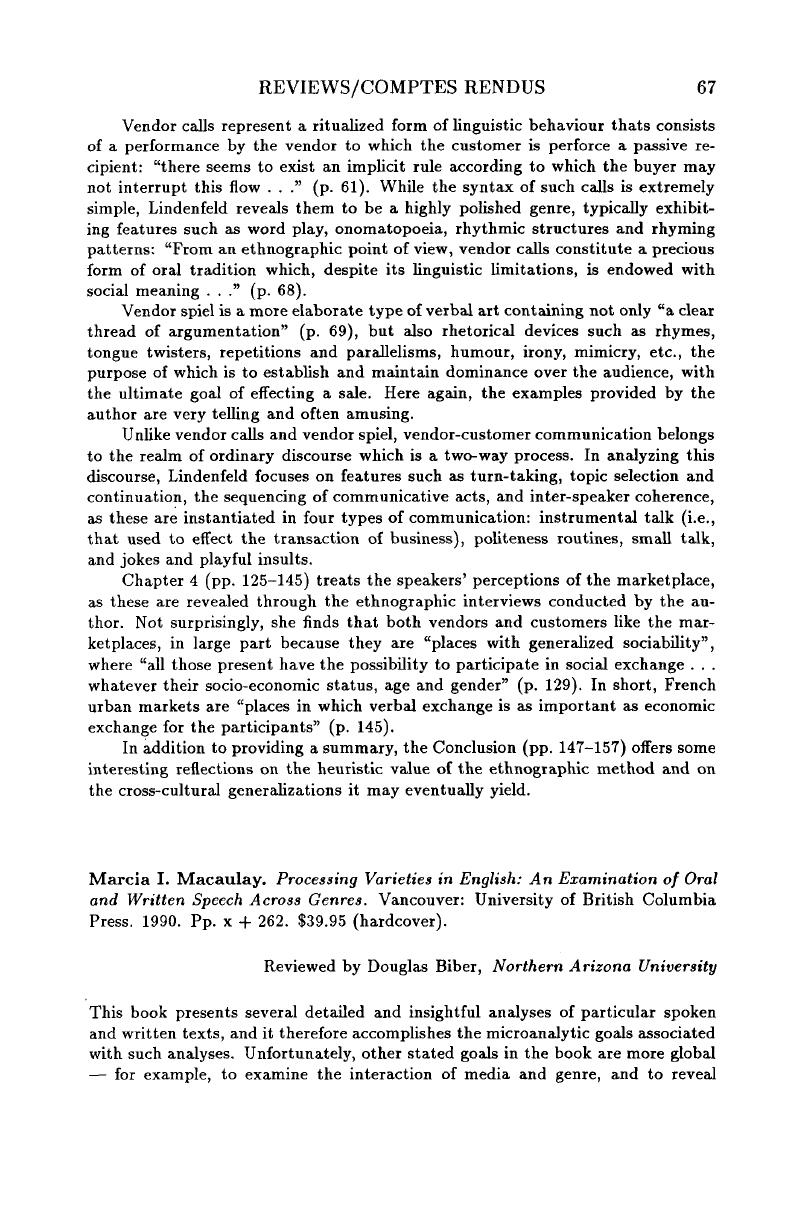No CrossRef data available.
Article contents
Marcia I. Macaulay. Processing Varieties in English: An Examination of Oral and Written Speech Across Genres. Vancouver: University of British Columbia Press. 1990. Pp. x + 262. $39.95 (hardcover).
Published online by Cambridge University Press: 27 June 2016
Abstract
An abstract is not available for this content so a preview has been provided. Please use the Get access link above for information on how to access this content.

- Type
- Reviews/Comptes rendus
- Information
- Canadian Journal of Linguistics/Revue canadienne de linguistique , Volume 37 , Issue 1 , March 1992 , pp. 67 - 71
- Copyright
- Copyright © Canadian Linguistic Association 1992
References
Beaman, Karen
1984
Coordination and Subordination Revisited: Syntactic Complexity in Spoken and Written Narrative Discourse. Pp. 45–80 in Coherence in Spoken and Written Discourse. Tannen, Deborah, ed. Norwood, N.J.: Ablex.Google Scholar
Biber, Douglas
1986
Spoken and Written Textual Dimensions in English: Resolving the Contradictory Findings. Language
62:384–414.CrossRefGoogle Scholar
Biber, Douglas
1988
Variation Across Speech and Writing. Cambridge: Cambridge University Press.Google Scholar
Chafe, Wallace L.
1982
Integration and Involvement in Speaking, Writing, and Oral Literature. Pp. 35–54 in Spoken and Written Language: Exploring Orality and Literacy. Tannen, Deborah, ed. Norwood, N.J.: Ablex.Google Scholar
Chafe, Wallace L., and Danielewicz, Jane
1987
Properties of Spoken and Written Language. Pp. 83–113 in Com prehending Oral and Written Language. Horowitz, Rosalind and Samuels, S.J., eds. New York: Academic Press.Google Scholar
Fox, Barbara A.
1987
Discourse Structure and Anaphora: Written and Conversational English. Cambridge: Cambridge University Press.Google Scholar
Halliday, M.A.K.
1978
Differences Between Spoken and Written Language: Some Implications for Literacy Teaching. Pp. 37–52 in Communication Through Reading: Proceedings of the 4th Australian Reading Conference. Page, Glenda, Elkins, John, and O’Connor, Barrie, eds. Adelaide: Australian Reading Association, Vol. 2.Google Scholar
Halliday, M.A.K.
1987
Spoken and Written Modes of Meaning. Pp. 55–82 in Comprehending Oral and Written Language. Horowitz, Rosalind and Samuels, S. Jay, eds. San Diego: Academic Press.Google Scholar
Rader, Margeret
1982
Context in Written Language: The Case of Imaginative Fiction. Pp. 185–198 in Spoken and Written Language: Exploring Orality and Literacy. Tannen, Deborah, ed. Norwood, N.J.: Ablex.Google Scholar
Redeker, Gisela
1984
On Differences Between Spoken and Written Language. Discourse Processes
7:43–55.CrossRefGoogle Scholar
Schafer, John C.
1981
The Linguistic Analysis of Spoken and Written Texts. Pp. 1–31 in Exploring Speaking-Writing Relationships: Connections and Contrasts. Kroll, Barry M. and Vann, Roberta J., eds. Urbana, Ill.: National Council of Teachers of English.Google Scholar
Tannen, Deborah
1982
Oral and Literate Strategies in Spoken and Written Narratives. Language
58:1–21.CrossRefGoogle Scholar




